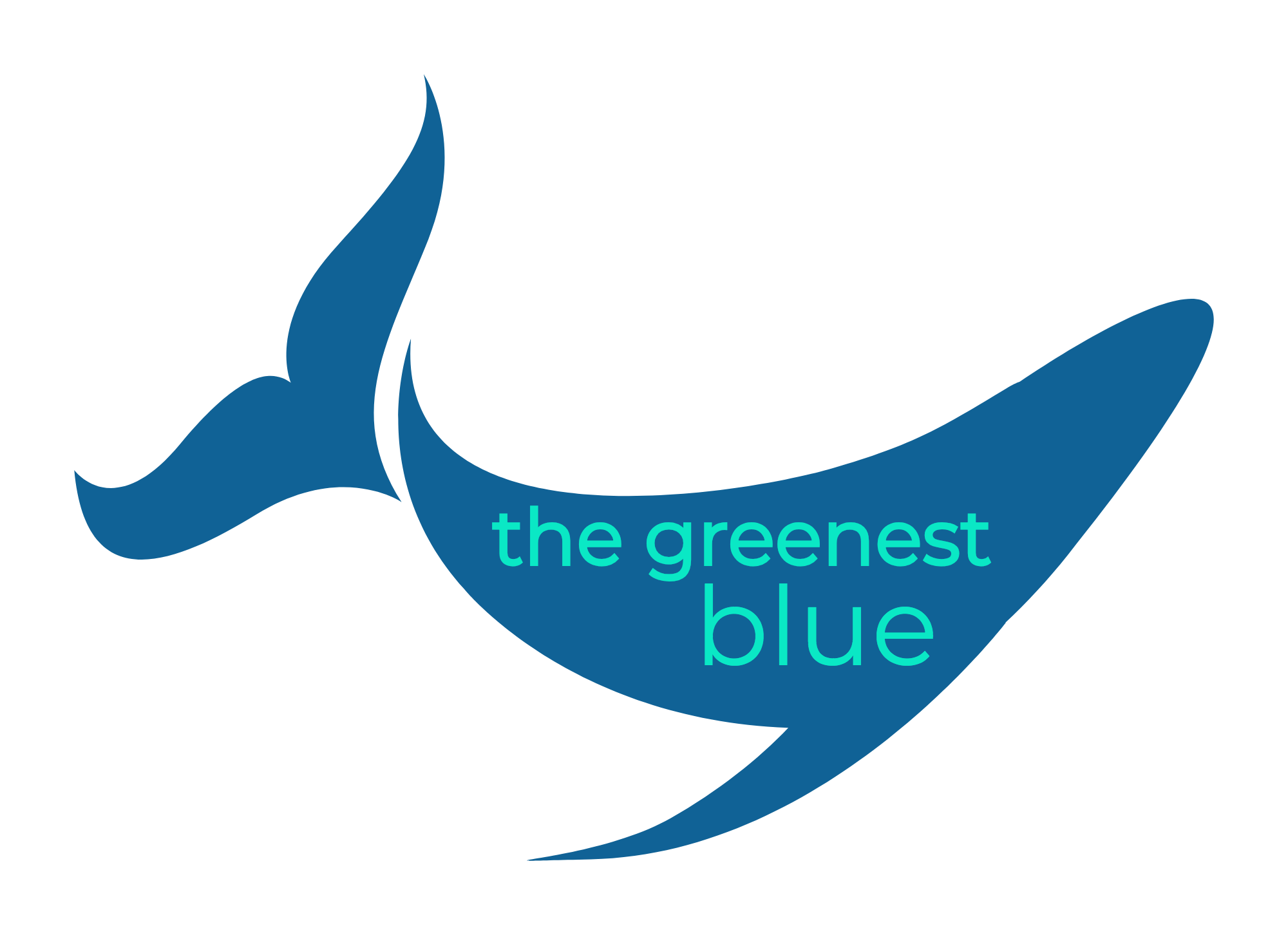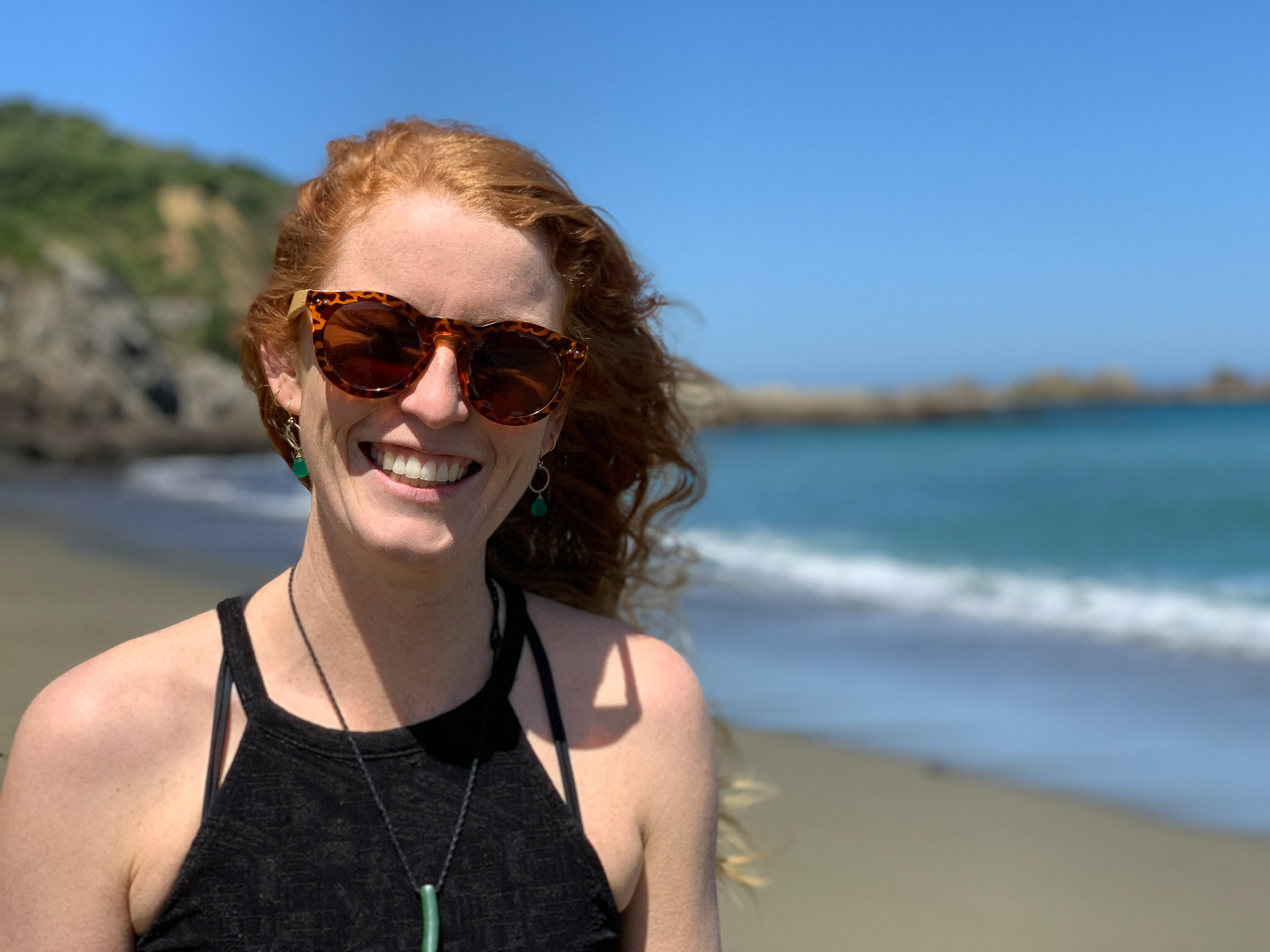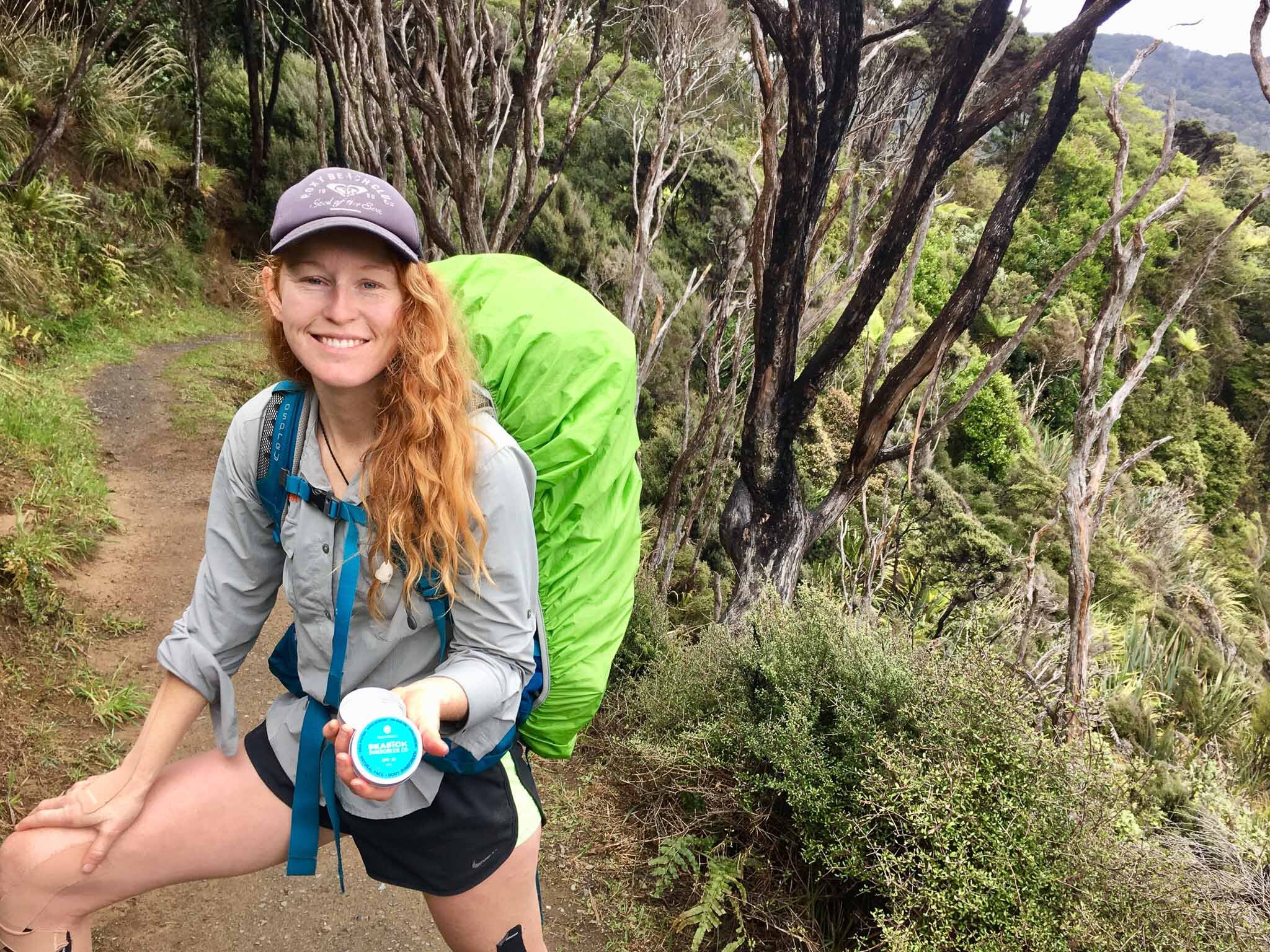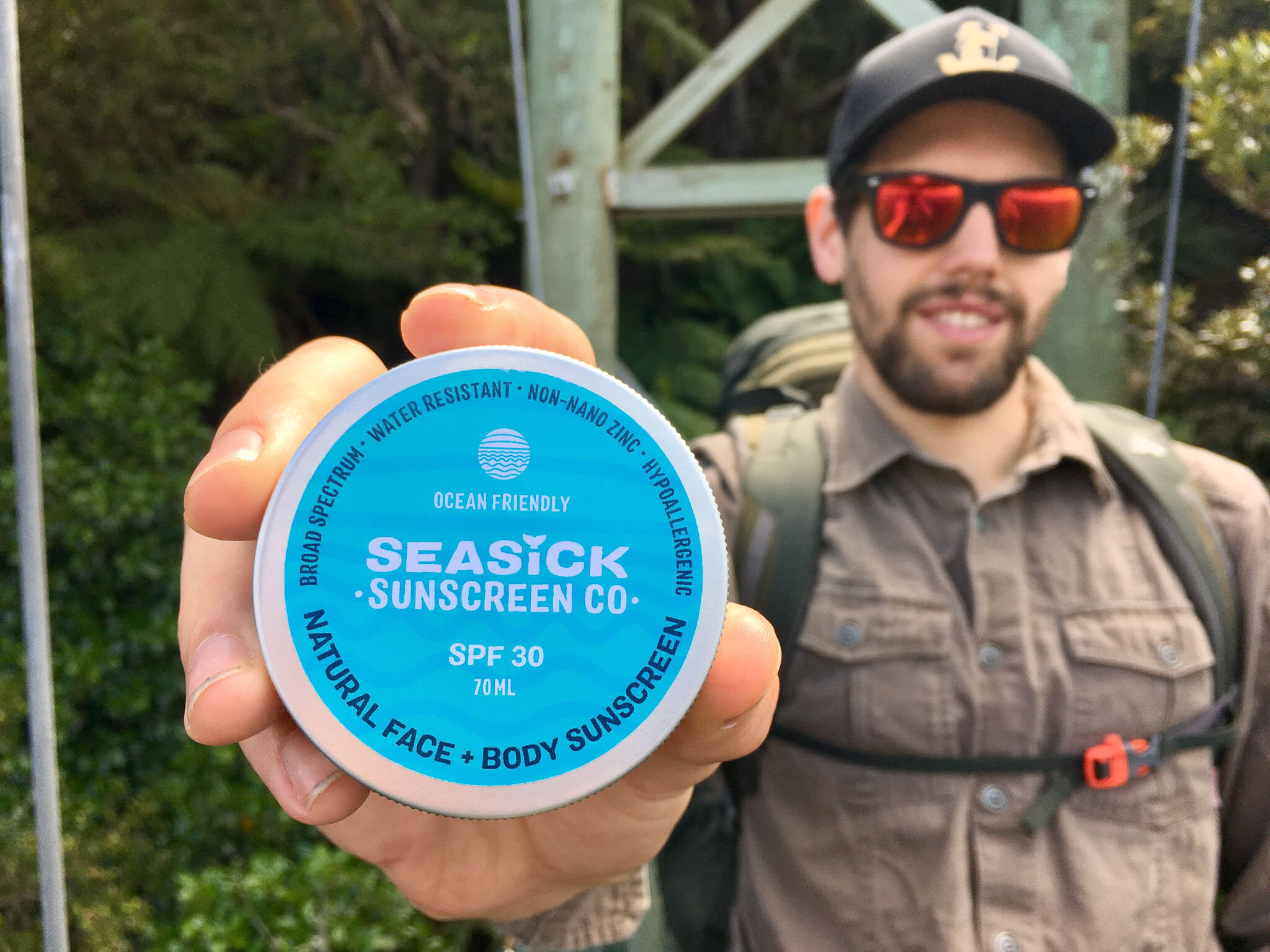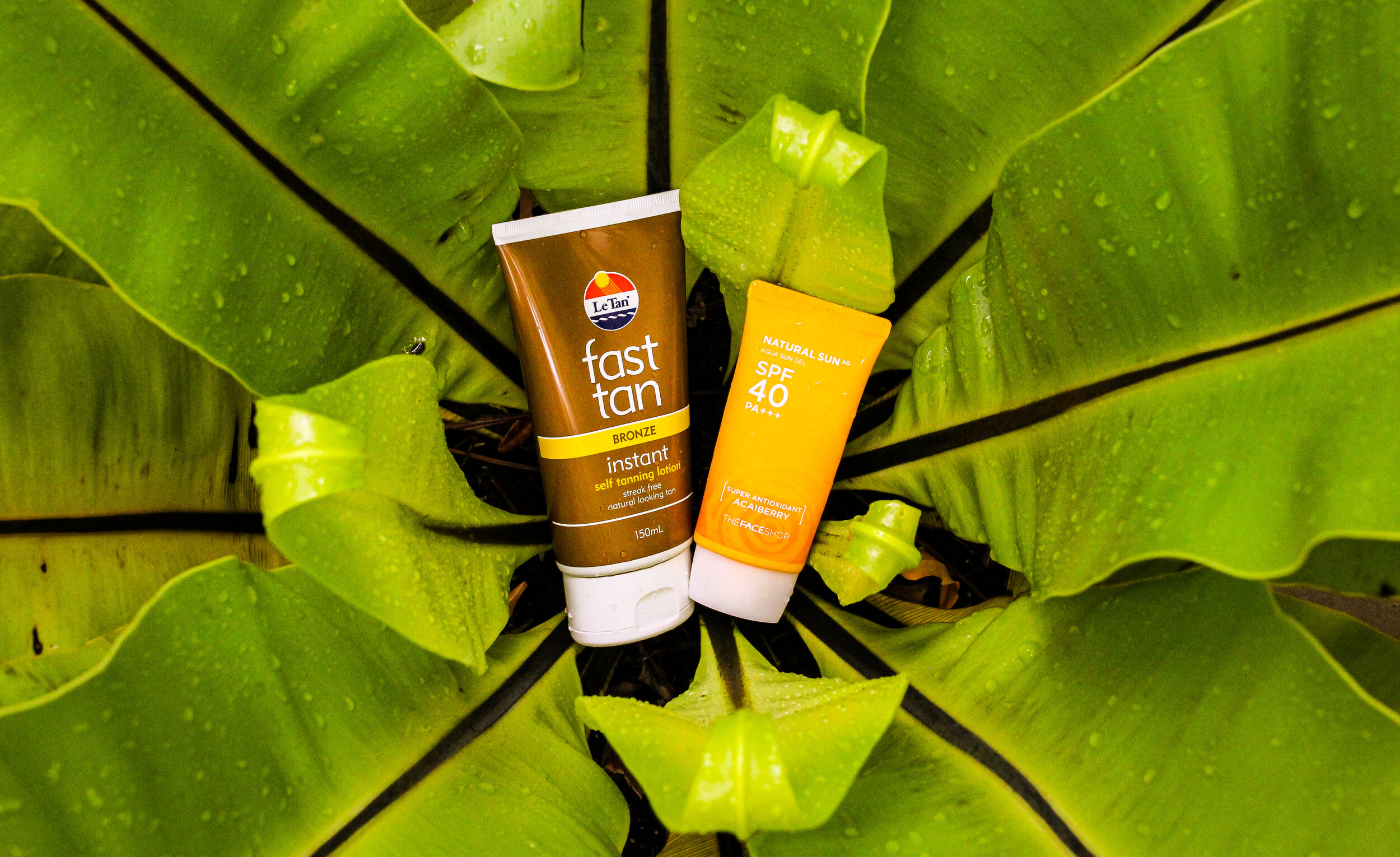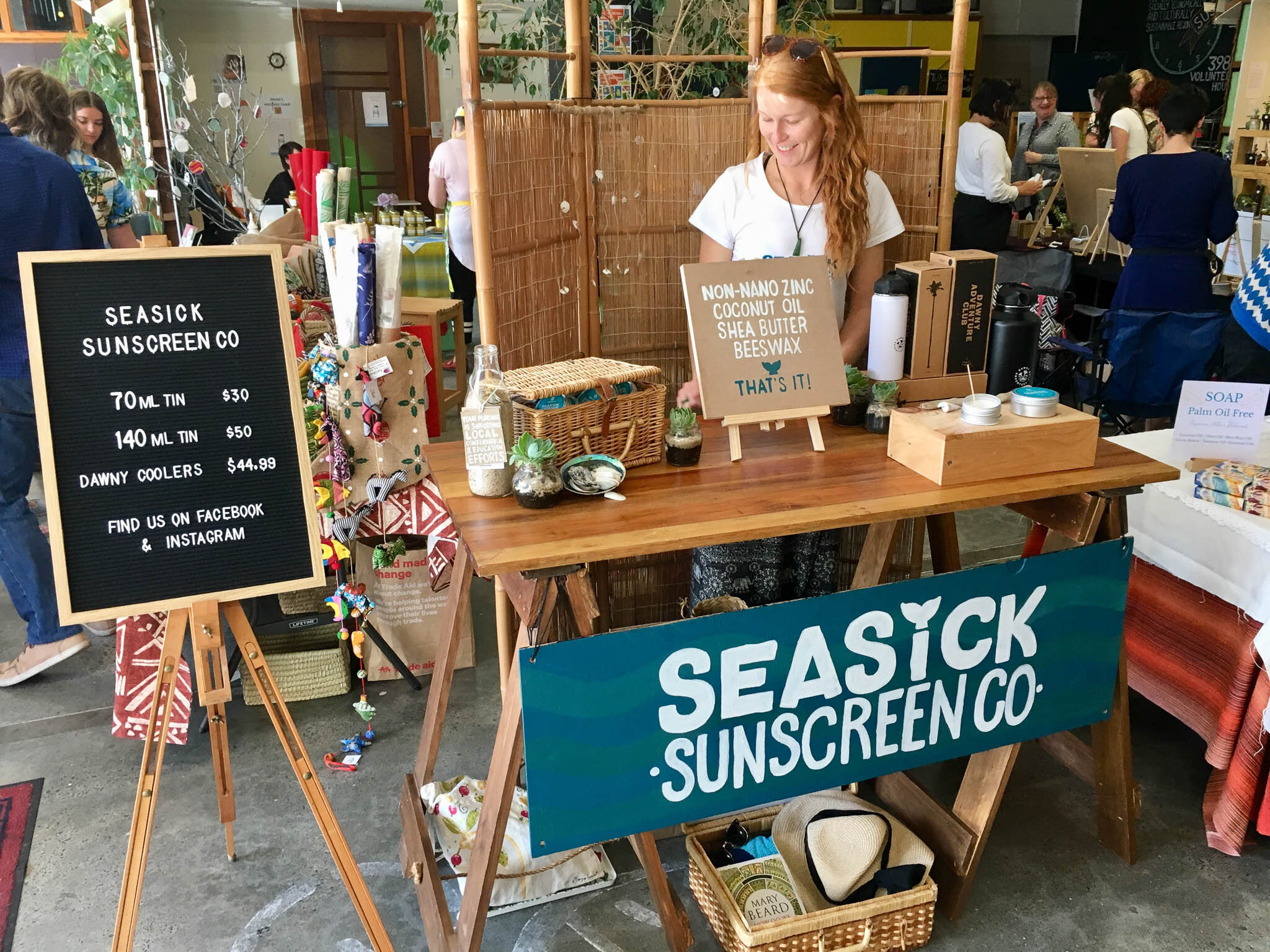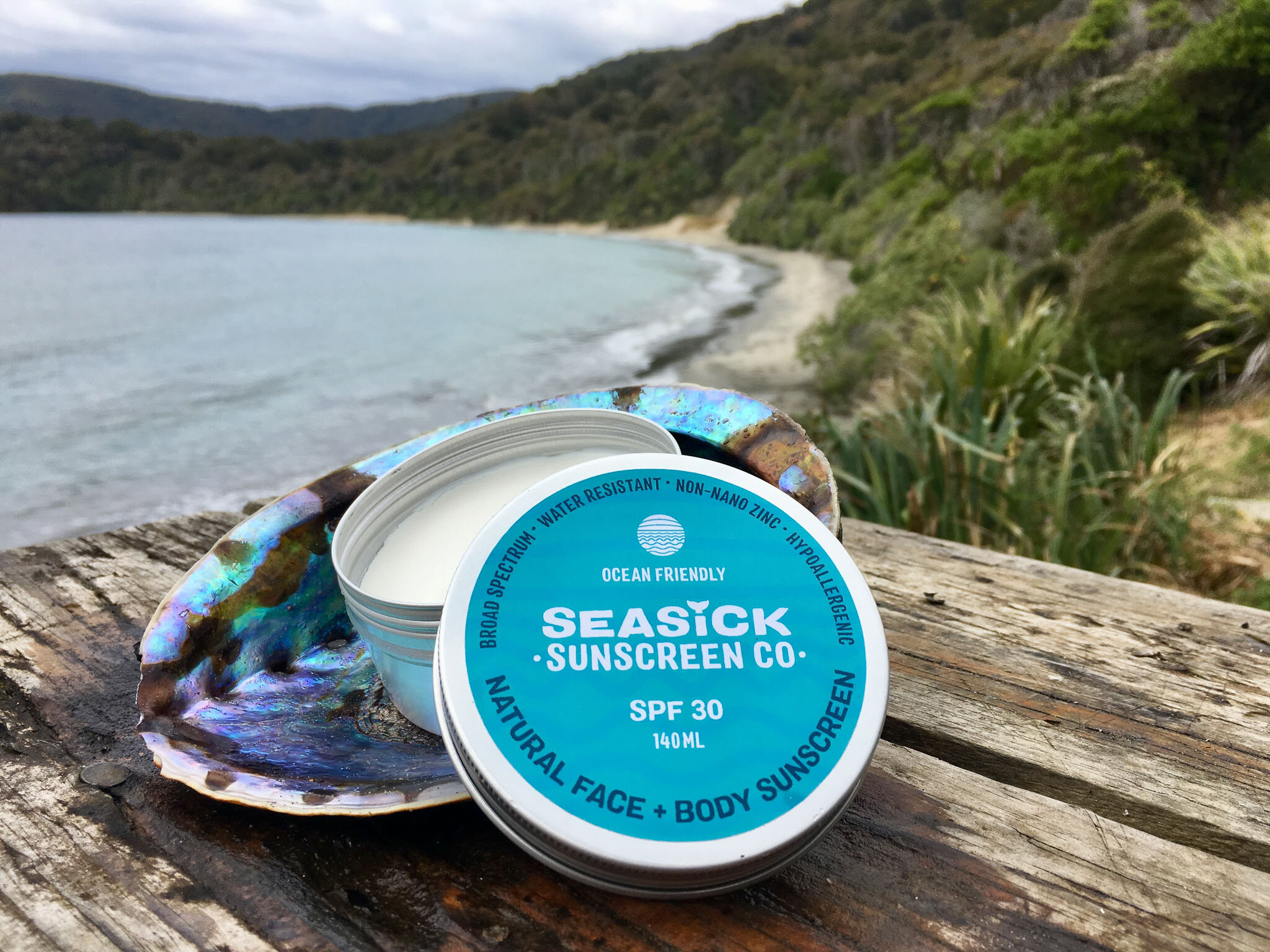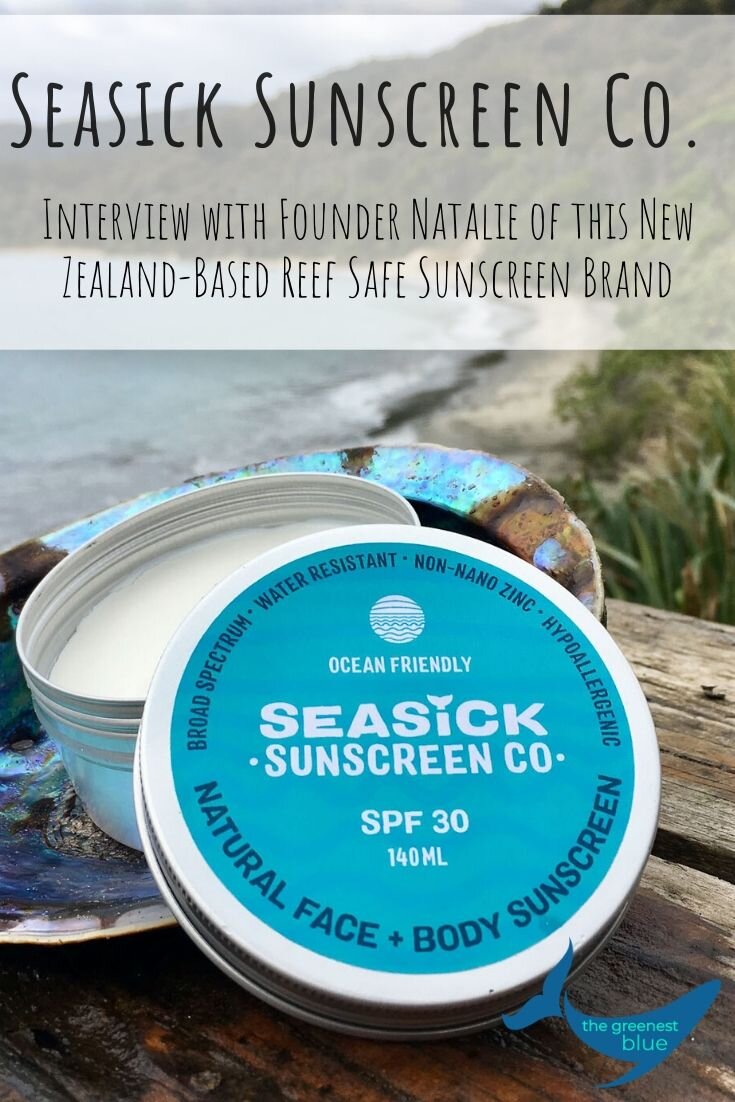Keeping NZ Reef-Safe and Sun-Protected: Founder Natalie of the New Seasick Sunscreen Co. Shares Her Story
This post contains affiliate links, which earn me a small commission on products I’m already in love with. This is at no extra cost to you! Thank you for supporting The Greenest Blue.
I love when I meet an eco-entrepreneur who is starting a business that’s more focused on showing love for the planet than earning profits. Throughout my travels, I’ve realized that you can find like-minded people all over the world who aren’t afraid to get out there and make things happen. It truly is an inspiration when you see these people using their creativity and innovation to promote change! That’s why I was so excited to come across Seasick Sunscreen Co., a boutique eco-friendly sunscreen start-up based in Wellington, New Zealand.
Meet Natalie, the Wellington-based founder of Seasick Sunscreen Co. (photo courtesy of Natalie)
Founder Natalie is busy crafting reef-safe, plastic-packaging-free sunscreen as a way to give back to the marine wonderland that she fell in love with as a girl growing up in Auckland. I’m a huge believer in mineral-based sunscreens and wear them daily on the job as a whale guide, so I was excited to find a locally-made option here in NZ. I also love to hear how people develop their passions and how they overcome their own challenges. Natalie was more than happy to share her story, and I’m stoked for the TGB community to hear it too!
Photo courtesy of Natalie
1. Hi Natalie! Can you give us a little bit of background on yourself and your passion for the environment?
Kia ora! I was born and raised in Auckland and have spent almost every summer at my family bach in Whitianga. I guess that’s where my affinity of the ocean comes from - growing up seeing orca, stingrays and dolphins. I now call Wellington home where I have a full time job in conservation (& late nights at Seasick Sunscreen). I have always loved nature - what started as a passion for animals and making forts in the forest soon developed into an all-consuming love and desire to protect the environment.
2. How did you get interested in environmental conservation? Where did this passion come from?
I’ve always had it, I was born with it! I grew up going to volunteer tree planting days with my family, running around in the bush making forts and going out on the water in our boat. I’ve always felt really passionate about protecting the environment, and that’s why I pursued a career in conservation – I believe life’s too short not to do something that creates good in the world. I also feel really strongly about each and every one of us doing our bit to reduce our impact on the planet – reducing plastic use, for example.
New Zealand has some stunning coastlines that are definitely worth protecting!
3. What environmental issues are you most passionate about?
Hmm, there are so many to choose from! A top one is caring for our oceans — they are at the forefront of the battle against climate change, and I believe that everyone should have the opportunity to swim in the oceans and enjoy New Zealand’s amazing coastlines. Reducing single-use plastic waste is another big issue, as I have seen first hand how they are choking our oceans (the first sea turtle I ever saw was lying dead on the beach tangled in plastic).
Our marine life deserves a clean home, yeah?
4. Did you always have the desire to run your own business? And if so, where did that inspiration come from?
Yes, I saw my mum and dad run their own business, and I’ve got some amazing friends running really successful eco-inspired start-ups around the world.
5. Why sunscreen?
About 1 year ago during a trip to Hawaii I found out about the damage sunscreen is doing to the environment. Being a redhead and fair-skinned, I’ve used a lot of sunscreen in my life - I’m always out in the sun hiking, surfing and going to the beach, and when I looked into what environmentally-friendly options were available, I found there weren’t really any options that use non-nano zinc oxide (the safest UV blocker for the environment and your skin) AND that didn’t come in plastic.
Well, she’s now certainly filling that niche!
Many commercial sunscreens contain harmful chemicals - read on to find out what makes some sunscreens reef-safe, and how you can make sure you don’t get fooled by greenwashing!
6. Can you give us a brief summary of what makes some sunscreens reef-safe and other sunscreens not so reef-safe?
The majority of sunscreens on the market contain oxybenzone and octinoxate as well as nano-particles. These ingredients can cause corals to bleach and are absorbed by algae, fish, and mammals. Lots of companies are greenwashing – they might label their products as ‘reef-safe’ if they remove 2 of the well-recognised ingredients, but still keep the rest (some of which are still harmful) and then still keep the “reef-safe label.” The safest UV blocker you can use for your body and the environment is non-nano zinc oxide. It’s a mineral particle that sits on top of the skin, unlike chemical sunscreens, so it’s not absorbed into your bloodstream, and the particles are too big for the corals and algae to absorb.
7. Okay, elevator pitch me. How do we motivate people to switch to reef-safe sunscreen if they uses excuses like “it’s more expensive”, “it’s less readily available”, or “it’s too hard to apply”?
We can convince them that they are making the right choice not just for the environment, but for their bodies, too! If you’re a surfer or diver, or just love the outdoors in general, knowing while you’re in those environments that you aren’t harming them can help you feel a lot better about your environmental footprint. Chemical sunscreens are absorbed straight into your bloodstream (chemicals like oxybenzone can be detected in urine just 20 mins after application) whereas mineral sunscreens like Seasick sit on top of the skin.
Applying reef-safe natural sunscreen isn’t difficult, it’s just a bit different because it comes in a tin and doesn’t have artificial emulsifiers. Like anything new, it takes a little bit of getting used to, but once you make the change you’ll never go back to chemical sunscreen. As for being more expensive, we find that while it may cost a bit more, a tin lasts longer/goes further/offers more coverage than toxic sunscreens, and besides, we think that paying a little more to protect our planet is worth it!
Stay reef-safe while you play - anyone who spends time in the sea probably cares enough about the ocean to treat it well and use eco-friendly sunscreen!
8. Hawaii is the first place in the U.S. to ban sunscreens with oxybenzone and octinoxate in them. Do you think NZ will follow suit one day?
Yes, absolutely. In fact, NZ is behind on this considering we have some of the best diving spots in the world. NZ isn’t well recognised for its coral reefs and therefore there hasn’t been as much pressure on us to ban chemical sunscreens due to coral bleaching. However, we have such incredible biodiversity. You can find half of the world’s whale species in NZ waters, as well as turtles, dolphins and amazing black corals that need protecting. Aotearoa is a biodiversity hotspot and the whole ecosystem is affected by these chemicals, not just the corals. Seasick Sunscreen is all about educating and raising awareness, changing the consumer mindset to make big changes.
I love that mission! Using the start-up as a way to not just produce something eco-friendly and necessary for life in the sun, but as a teaching tool to open the discussion around big environmental topics.
Marine mammals need help, as certain species decline in numbers. Do your part for the sea and use responsible products.
9. What was the timeline for starting your own eco-business, from the birth of the idea to actually getting the product stocked on shelves?
I came up with the idea on the plane back from Hawaii in January 2019, and two months later I was at my first market day. That meant a lot of late nights and weekends, trialling different sunscreen recipes, chasing down suppliers, getting the sunscreen SPF tested, etc. My first market (Newtown Festival 2019) went really well, everyone loved the story and the product, and that gave me the confidence to invest in this idea. I’ve taken the winter to refine the product, and Hopper Eco Home will be my first store to stock my product this month. Our online store will be starting this month as well! Between that market and now, I’ve been bombarded with messages from friends, friends of friends, the word of mouth interest has been huge and I’m excited to have it available for people soon.
10. How did you choose the name Seasick Sunscreen Co?
(Laughs) Ummm…after much deliberation, some head banging, and throwing around a lot of terrible ocean related puns, a family member staying at our bach in the Coromandel (and testing the sunscreen) finally had a brainwave, messaged me the name Seasick Sunscreen Co, and I loved it instantly. Thanks Brandon!
11. What is your dream vision for the company? Would you like to see it stocked overseas or just closer to home? Are there other products you could see yourself making besides sunscreen?
At this stage I see it as being a local, New Zealand business – shipping overseas raises some questions for me regarding sustainability. I definitely want to expand the range. I would love to be selling sun hats, t-shirts and rash guards, and there is already a demand from my customers for a sunscreen-bug repellent.
Mama Ocean looking beautiful
12. I love how simple the ingredient list is for your sunscreen – it makes it easy to be transparent with your customers. What was the process like for developing your product?
We love our ingredients too! I did a lot of research to make sure what I was using was reef-safe and effective. I found inspiration in a lot of the products I myself like and use. Finding the non-nano zinc was the hardest part by far – it was challenging to find something that would provide a high enough SPF without compromising the environmentally-friendly principles of the product. Oh – and then of course testing it out on my friends and family – including the bare buns test (one bum cheek with Seasick applied to it and one without….ouch!). The biggest challenge was getting the SPF tested in an accredited lab. Several thousand dollars later I am stoked to say it has been tested at Dermatest Lab, Australia's leading sunscreen and skin care evaluation laboratory, confirming that the SPF is over 30 and that the product meets both Critical Wavelength, UVAPF and UVAPF/SPF requirements.
13. What has been the biggest challenge of starting Seasick Sunscreen Co?
(Long sigh) Having the confidence to believe that you can actually do it! That you can be a product developer, website designer, photographer, salesperson, accountant, all at once while holding down a full time day job. But the support I have received from friends, family and complete strangers has been amazing.
14. Do you have any advice for readers on creating their own eco-product to fill a niche in the market?
Do your research, get out talking to potential customers and suppliers and then go for it!
Get out there and get creative! Photo courtesy of Natalie
Natalie, you’re amazing! You remind me that it’s so worth it to follow your passions and listen to those ideas bouncing around in your head. You never know what they might lead to. I can’t wait to get back out on the water with a Seasick Sunscreen Co tin in pocket!
So, the good news is, if you’re NZ based, you’re able to purchase Natalie’s sunscreen online here. Make sure to connect with her on Instagram. Don’t fear if you’re bopping around somewhere else in the world. I love sharing my favorite zincs with you - check out Yallingup Zinc from Western Australia if you’re Down Under, or Raw Elements (choose the plastic-free tins) if you’re stateside.
More blog updates coming soon! I can’t wait to chat about my sailing adventures around Tonga and to New Zealand. There will be way too much to talk about, but as always, imma do my best.
Peace!
Lozza
